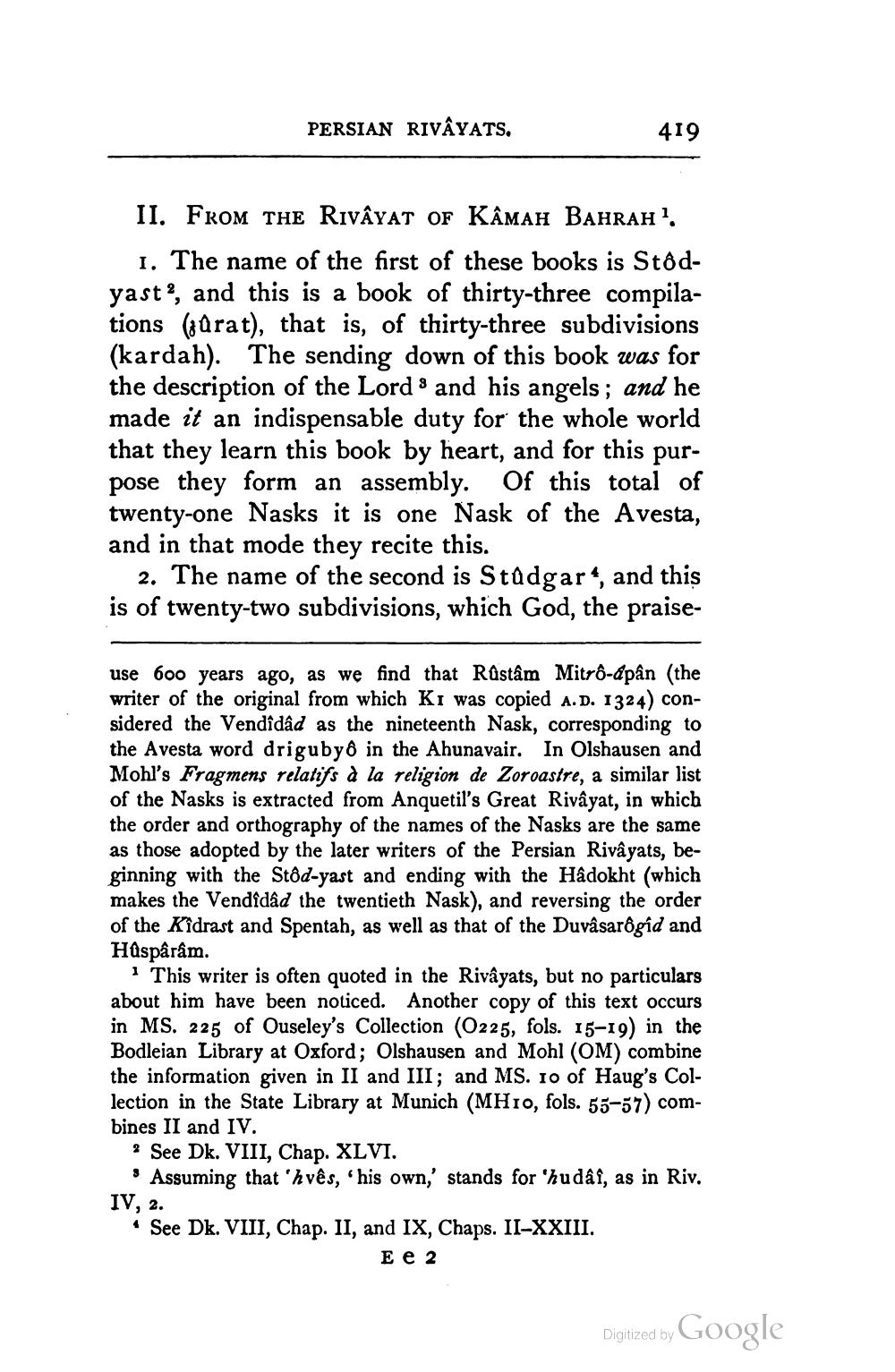________________
PERSIAN RIVÂYATS.
419
II. FROM THE RIVậYAT OF KÂmAh BAHRAH !.
1. The name of the first of these books is Stôdyast?, and this is a book of thirty-three compilations (drat), that is, of thirty-three subdivisions (kardah). The sending down of this book was for the description of the Lord 8 and his angels; and he made it an indispensable duty for the whole world that they learn this book by heart, and for this purpose they form an assembly. Of this total of twenty-one Nasks it is one Nask of the Avesta, and in that mode they recite this.
2. The name of the second is Stadgar“, and this is of twenty-two subdivisions, which God, the praise
use 600 years ago, as we find that Rastâm Mitrô-dpân (the writer of the original from which Ki was copied A.D. 1324) considered the Vendidâd as the nineteenth Nask, corresponding to the Avesta word drigubyô in the Ahunavair. In Olshausen and Mohl's Fragmens relatifs à la religion de Zoroastre, a similar list of the Nasks is extracted from Anquetil's Great Rivâyat, in which the order and orthography of the names of the Nasks are the same as those adopted by the later writers of the Persian Rivâyats, beginning with the Stôd-yast and ending with the Hâdokht (which makes the Vendidâd the twentieth Nask), and reversing the order of the Kidrast and Spentah, as well as that of the Duvâsarôgid and Hüspârâm.
1 This writer is often quoted in the Rivâyats, but no particulars about him have been noticed. Another copy of this text occurs in MS. 225 of Ouseley's Collection (0225, fols. 15-19) in the Bodleian Library at Oxford; Olshausen and Mohl (OM) combine the information given in II and III; and MS. 10 of Haug's Collection in the State Library at Munich (MHIO, fols. 55-57) combines II and IV.
? See Dk. VIII, Chap. XLVI.
• Assuming that 'hvês, “his own,' stands for 'hudáf, as in Riv. IV, 2. See Dk. VIII, Chap. II, and IX, Chaps. II-XXIII.
Еe 2
Digitized by Google




